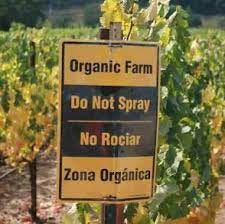The United States faces an unabating chronic disease epidemic, leading to skyrocketing health care costs and devastating effects for individuals, communities, and the nation.
The connection between chronic disease and nutrition is undeniable; nutrition not only plays a role in the onset of disease but also its prevention, management, and treatment.
Efforts that involve a health care response to the need for better nutrition fall under the umbrella term ‘Food is Medicine.’
An emerging body of research demonstrates the enormous promise of Food is Medicine interventions across a range of health conditions in improving health and quality of life, while also curbing health care costs.
The Rodale Institute writes:
“Organic is a philosophy. This isn’t just about food. Organic is a vision for working and living in harmony with nature. The result is healthy soil, which grows healthy plants, which make for healthy people. By abstaining from synthetic inputs and encouraging natural systems, organic farmers help create a better future for people, animals, and the environment.”
Another way to explain the ORGANIC FOOD MOVEMENT you vote with your money.
I have heard organic won’t be able to feed the growing population.
Why does organic cost more?
What is the Dirty Dozen?
You have Q’s I have A’s
Did you know…
Government subsidies for conventional farmers reduce the overall cost of chemical crops. Equal subsidization is not available to organic farmers.
While customers may pay more upfront for an organic product, society pays, both literally and metaphorically, in turn for conventional agriculture’s unintended consequences including eroded soils, polluted water, and a farmer suicide crisis.
Demand outstrips supply. Organic product sales have climbed by over 70% since 2008, yet only 1% of domestic arable acreage is currently certified organic.
Findings from a 40-year study Farming Systems Trial have determined that yields of organic grain crops—which make up a bulk of global food production—are competitive with conventional yields after a transition period, and organic yields outperform conventional in times of drought by up to 40%.
THE DIRTY DOZEN Each year, the Environmental Working Group releases a consumer guide to the kinds of produce with the most amount of residual pesticides. You can download it here. If you can’t afford to buy only organic, prioritize it when buying these kinds of produce.
There are more reasons to support THE ORGANIC MOVEMENT than there are reasons to defend chemical farming.
Back to my opening statement. The rising chronic illness problem is connected to nutrition.
Nutrition is directly related to how our food system has been hijacked by corporate and government interests.
My advice to growers thinking of transitioning into organic farming is not to be afraid of the challenge. The industry is growing; the people are out there to help you out.
There are ways to control pests and diseases in organics; the resources are out there and continue to grow as time goes on — it is definitely not going away,”
We fight back by supporting THE ORGANIC MOVEMENT.



